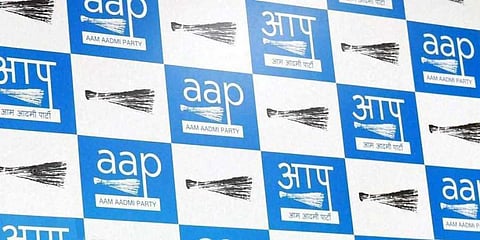

With the onset of summer in 2011 had begun the Anna Hazare’s ‘India Against Corruption’ movement. A very anglicised and stylish name of a public movement gave sufficient indication of it being rooted in the rise of the new educated middle-class pushing for a change.
The new generation middle-class, which largely has been the beneficiary of the economy of the country opening up two decades earlier, pushed for change, not just of government but the culture of governance. This movement, outside Delhi-NCR, had maximum traction in Bengaluru. No wonder both being the hubs of new age industries.
A decade later, the only visible surviving outcome of the India Against Corruption is the Aam Aadmi Party (AAP), which a few days back celebrated the getting the status of national party.For getting a national political party status, among other criterions is the party getting recognition as a state party in at least four states.
To be a state party it requires polling eight percent or more of the votes polled in the last legislative elections. With governments in two states and having fought elections in almost all states including the last one in Karnataka, getting recognised as a state party in four states would not have been difficult for AAP.
However, the question at hand is whether the AAP has truly embarked on a journey to become a national alternative to the BJP or the Congress-led Opposition. It can be safely said that their national status is more of a jugglery of figures than any substantive content.
More importantly, in its ‘growth’ there has been no contribution of those who originally backed the idea of the common people’s party.The answer to the question mentioned in the paragraph above lies in the performance of the AAP in the just concluded Karnataka polls. This national party contested 208 of 224 assembly seats in the southern state.
A party which claims to have over two lakh active members in the state, however, could garner only a total of 2.25 lakhvotes across the seats it contested.It could have been much lower if their candidate in a remote constituency named Ron in the Gadag district, Anekal Doddaiah would not have polled 8,839, or 4.96 per cent of the 1,78,196 votes.
The party was trounced in urban centres, especially Bengaluru, where three of its prominent candidates — BrijeshKalappa, Mohan Dasari and Mathai K lost badly. Their star candidate Kalappa, a former Congress spokesperson who quit the party and joined the AAP, and for whose nomination AAP’s star campaigner Raghav Chadha had specially gone down to Bengaluru, polled just 600 votes in Chickpet. Despite Kalappa being ‘interviewed’ on national TV channels, AAP’s vote share of 0.58 per cent in Chickpetwas lower than NOTA’s 0.69 per cent.
In fact on the 28 seats spread across Bengaluru, AAP could not even maintain the average score of thousand votes per seat and it goes without saying that it lost its deposit on all the seats. The AAP leadership knows about its pathetic performance but doesn’t want to talk about it.
Their core vote of ‘internet-connected’ generation has either withdrawn from politics or are now not voting for AAP. Their pathetic electoral performance outside Delhi and Punjab, coupled with corruption charges in Delhi government has further eroded AAP’s political gravitas.
Call it fair or unfair, the ruling party of Delhi is set to lose the control of Delhi government to the Lieutenant Governor. Not surprised that on the streets of Delhi no one seems to be either mourning this loss of control.
Sidharth Mishra
Author and president, Centre for Reforms, Development & Justice